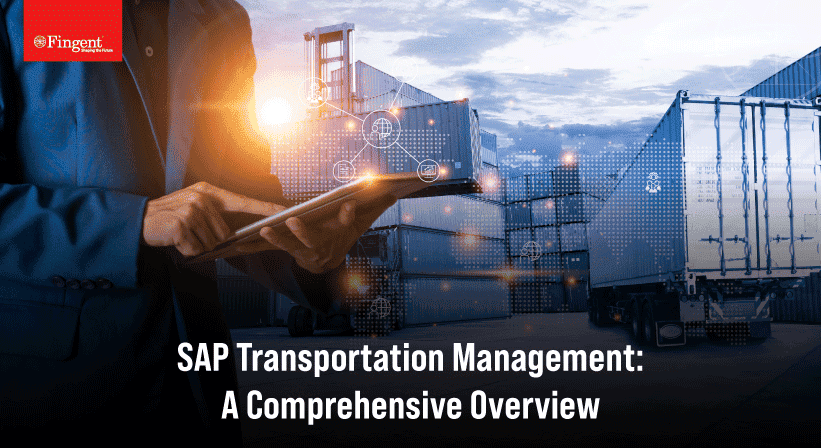A Simple Guide To Handling Common SAP Errors & Troubleshoots!
Today, technology unlocks the value of time, allowing us to easily juggle multiple tasks and accomplish much more in less time. For some time now, SAP has become the backbone of efficient business operations. It has helped many businesses streamline their operations and scale their business to never before imagined heights.
Have you implemented SAP yet? If you have, then you must see firsthand how amazing it is! In this blog, we will help you maintain that awesomeness by giving you some great tips on managing and troubleshooting common SAP errors and issues.
Why SAP Is No Longer An Option But A Necessity
To manage current processes, many businesses still use a wide array of legacy software programs and possibly cloud apps to handle different procedures.
Did you know: Enterprises add 1,061 applications on average to their ecosystem. – 2023 connectivity Benchmark Report by Mulesoft Research.
In many organizations, it is common for separate departments to purchase and develop their own software solutions, operating independently of one another. This can lead to the use of multiple software programs within a department, which often lack the ability to integrate with each other.
A 2023 connectivity Benchmark Report by Mulesoft Research shows that only 29% of the surveyed businesses’ applications are properly integrated.
As a result, businesses may struggle to create a unified ecosystem that meets their current needs. To address this, audit your current toolkit and consider implementing a comprehensive ERP solution that can integrate various business operations. SAP solutions offer the ability to integrate these modular apps and create a more cohesive business system. By using a unified approach, businesses can improve their overall operations and drive growth.
The report by Mulesoft Research further mentioned that only 36% of enterprises consider the lack of integration between siloed apps the biggest challenge to digital transformation. Now if you aren’t one of them and have already implemented SAP, that is commendable indeed! –
However, the SAP system can be quite intricate. Given that, issues and errors may arise due to various factors.
Read more: Driving Business Modernization with SAP!
Suggestions And Tips to Manage and Troubleshoot SAP Implementation Issues
Here are some suggestions for common SAP errors and issues along with tips to manage and troubleshoot those issues effectively.
Issue #1- Slow Performance
Various aspects affect performance. These include network issues, database problems, or system overload. SAP performance issues, if ignored, can cause serious problems. To troubleshoot and manage this try the following steps:
- Identify the source: Identify the component or area that is responsible for the slowness. You can do this by keeping a tab on SAP performance metrics like response times, resource usage, and so on.
- Analyze logs and traces: Use tools provided by SAP to analyze logs and traces.
- Monitor hardware and network components: Monitoring servers, storage devices, and network components can help ensure the hardware is adequately configured, updated, and optimized.
- Check system performance: Check system performance periodically to identify trends and patterns.
- Optimize database: Check for memory leaks and increase database cache if necessary. Perform regular maintenance tasks like defragmentation and indexing.
Issue #2 – Authorization
Authorization problems may arise if SAP users lack the necessary access to certain transactions or functions. Here are some steps you can take to address authorization issues:
- Check who has what authorization: Confirm that users have the appropriate authorizations for the pertinent transactions and functions. The specified user needs a specific authorization object. Use the SE37 transaction or SE80 in test mode. The result table is very compact and easy to understand for authorization experts.
To help solve authorization problems, you can ask yourself:
- What data did the user access to avail which function?
- What was the reaction of the system and how should it have reacted?
- How is the authorization check set up?
- Verify if the roles and profiles match: Ensure user roles and profiles are correctly assigned.
- Use the right tools: Utilize the authorization trace tool to identify any authorization problems.
Issue #3 – Data Inconsistencies
Data inconsistency problems can occur when data is incorrectly entered or updated in SAP. These issues fall into one or more categories such as unavailable data, internal inconsistency, inconsistent page, and inconsistent page set. To identify and troubleshoot data inconsistencies, try the following steps:
- Identify: Identify the database and the table space that contain inconsistent data.
- Prevent escalation of the problem: Limit access to the data before an attempt is made to resolve the inconsistency. Doing so prevents subsequent updates to the inconsistent data and thus prevents the problem from escalating.
- Verify data: Verify if the data entered and updated is correct in SAP.
- Search the data: Locate missing or duplicate data.
- Use the right tools: Use the data consistency check tool to identify data inconsistencies.
Issue #4 – ABAP Programming Errors
ABAP programming errors can have many causes and can interrupt the program. The most common reasons for these errors are non-handled exceptions, or that a handleable exception was not handled, a non-handleable exception was raised, an exit message was sent, or an assertion failed. Here is what you can do to troubleshoot the issue:
- Analyze the error message: Read the error message carefully to understand the nature of the problem. Look for keywords or specific error codes that can provide insights into the issue.
- Review the code: Examine the ABAP code where the error occurred. Pay attention to the line number mentioned in the error message. Check for syntax errors, missing or incorrect statements, or any potential logical issues.
- Debug the code: Use the ABAP debugger to step through the code and identify the exact point where the error occurs. Set breakpoints in the code to stop execution at specific lines and observe variable values to pinpoint the problem.
- Analyze data and variables: Evaluate the data and variables used in the code. Ensure they contain the expected values and are correctly assigned. Use data inspectors, watchpoints, or variable analysis tools to monitor their values during runtime.
- Check system logs: Review system logs, such as the ABAP runtime error log (ST22 transaction), to gather additional information about the error. Look for any relevant entries that can provide clues about the root cause.
- Apply software patches and updates: Ensure that your SAP system is up-to-date with the latest patches and updates. Some errors might be resolved by applying the relevant software fixes provided by SAP.
Issue #5 – Integration Issues
Integration issues occur when there are issues with data exchange between SAP and other systems. To troubleshoot integration issues, try the following steps:
- Identify the scope and symptoms: Clearly define the integration problem you are facing and identify the specific symptoms. For example, determine if it’s a data transfer issue, communication problem, or functional discrepancy.
- Review integration configurations: Verify the integration settings and configurations in both the sending and receiving systems. Check the integration points, interfaces, message types, mappings, and adapters to ensure they are correctly set up.
- Check system connectivity: Validate the connectivity between the systems involved in the integration. Ensure that network connections, firewalls, and communication channels are properly configured and accessible.
- Analyze error messages and logs: Examine error messages, log files, and monitoring tools specific to the integration scenario. SAP provides various tools like SAP PI/PO monitoring, SAP AIF, or SAP CPI for monitoring and error analysis. Analyze the messages and logs to identify any error codes, timestamps, or specific details that can help pinpoint the issue.
- Collaborate with integration partners: Engage with the stakeholders involved in the integration, such as functional consultants, technical teams, or external partners. Collaborate to understand their system configurations, share information, and jointly troubleshoot the issue.
Read more: Top Business Benefits to Gain with Fingent’s SAP AMS Services!
How Can Fingent Help
Automating the monitoring and optimization of SAP performance can significantly enhance your enterprise operations. It is a positive step towards maximizing productivity and efficiency. As a trusted industry leader, Fingent can assist you in optimizing your SAP system and other relevant tools to ensure they function seamlessly within your enterprise.
To avoid costly performance and security issues associated with SAP systems, it is advisable to consult our experienced SAP experts. At Fingent, we are proficient in tailoring SAP solutions to meet the unique need of your enterprise. Our team is equipped with global expertise in implementing SAP solutions across various industries and business sizes.
Contact us today to explore your SAP options and benefit from a seamless implementation that aligns with your enterprise requirements.
Stay up to date on what's new

Recommended Posts

28 Mar 2025 B2B
Cloud ERP Evolution: Why ‘Rise with SAP’ is the Future of Digital Transformation
The digital landscape is advancing at a rapid pace, and if your business isn’t adapting, it isn’t going to survive. Introducing RISE with SAP—a cloud solution that revolutionizes companies. SAP……

20 Mar 2025 B2B
SAP for Startups: A Power Tool For Success in 2025!
In 2025, startups will disrupt sectors. They establish trends and redefine the rules. But here's the catch: even pioneers require a strong strategy. And that’s where technology plays a role.……

15 Nov 2023 B2B
SAP S/4HANA Cloud Migration – All that You Need To Know!
“Our future success is directly proportional to our ability to understand, adopt and integrate new technology into our work.” – Sukant Ratnakar – CEO, Quantraz Inc. Since the dawn of its……

23 Aug 2023 Logistics B2B
SAP Transportation Management: A Comprehensive Overview
SAP software, as most of us know, is a tool used to control all aspects of critical business functions specifically. It integrates and automates key processes, ultimately helping organizations run……
Featured Blogs
Stay up to date on
what's new















